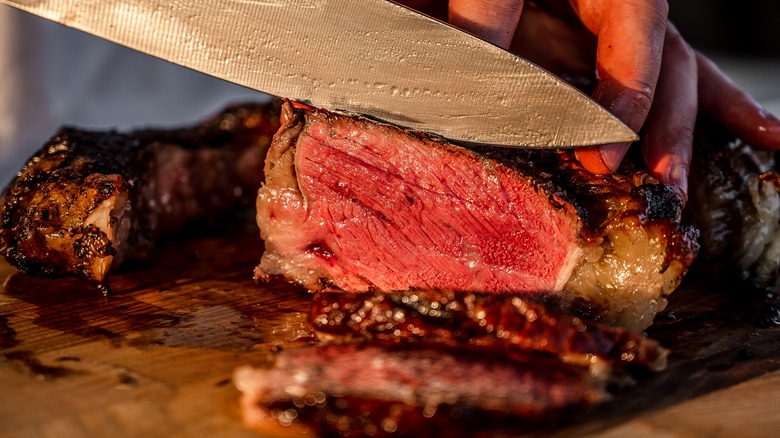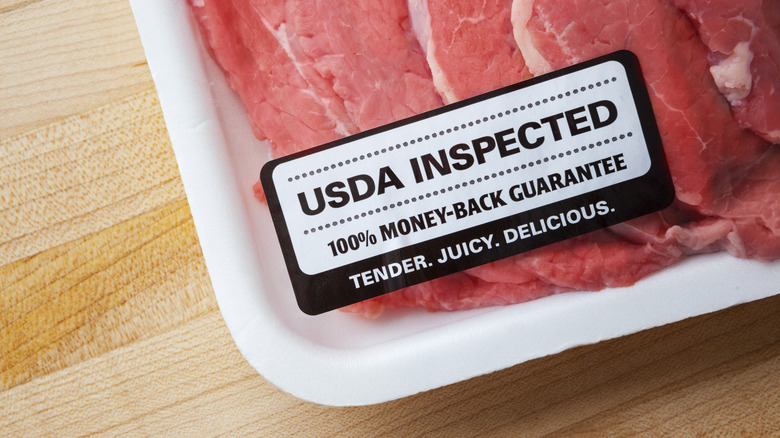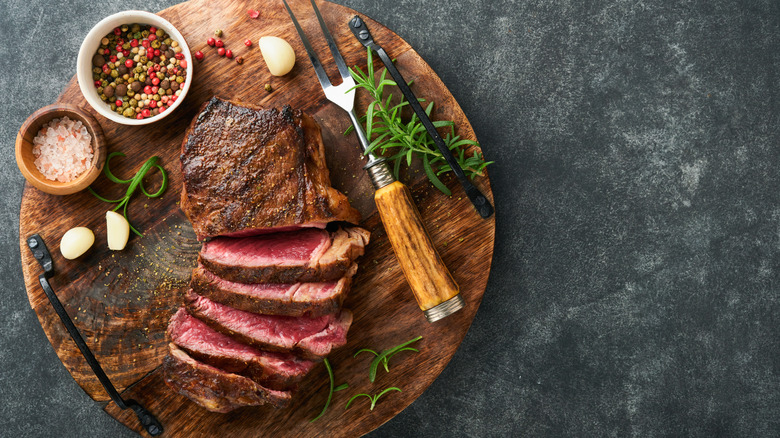How To Choose The Perfect Steak At The Store
For the uninitiated, shopping for a high-quality steak can seem like a challenge. Most grocery stores sell different cuts of steak that vary in marbling, shape, and thickness — all important factors to consider if you want a perfect sear and texture in your meat. While outside factors such as cooking methods will inform what steak will work best in your recipe, there are a few universal features in store-bought beef that will tell you if the product you're buying will stand out.
Marbling, or the presence of small streaks of fat between the lean protein, remains one of the best ways to visually tell apart a rich steak from a poor one. This fat content melts under high heat and allows the steak to remain moist in the process, which helps its texture to remain buttery smooth rather than dry. More marbling generally translates to stronger flavor, although keep in mind that fatty steaks may feel waxy if undercooked.
Read the USDA's beef grade label to guarantee the quality of your steak
If you don't want to solely rely on visual cues, you can also try to find the U.S. Department of Agriculture's beef grade labels, which are ranked based on quality and marbling. Prime cuts have the most marbling and are generally what most dining establishments purchase, but they are also the most expensive option on the market. If you're turned off by the price of prime beef, choice cuts are also excellent candidates with almost as high marbling.
Beef that is graded select and standard tends to have less fat than prime and choice cuts. Though these two grades tend to sell for considerably cheaper prices, they can still be turned into delicious steaks under the right cooking methods. When it comes to the cut of beef, keep in mind that flank, skirt, and flat iron steak are some of the budget-friendly cuts that can shine in the kitchen, so don't feel pressured to spend a large amount of money on pricey cuts such as ribeye and filet mignon.
Choose thick steak cuts to avoid overcooked meat
Not many dishes can compare to the succulent mouthfeel of a thick, juicy steak, and when it comes to choosing the best cut on the market, bigger tends to be better. Generally, large cuts that are an inch or more in thickness will give any home cook more room for timing error during searing, as their size makes it less likely that their center will fully cook up. You still have to practice some caution with your beef's surface (especially with a large steak that might take some time to reach your desired doneness), so monitor the intensity of your heat source.
With all that said, don't underestimate thinner cuts of beef. These thin meat strips shine in many recipes that require flash cooking times, including fajitas, hot pot, and stir-fried dishes. You can still use them for regular steaks, but just be aware that these cuts are more susceptible to burning and drying up if seared for too long.



